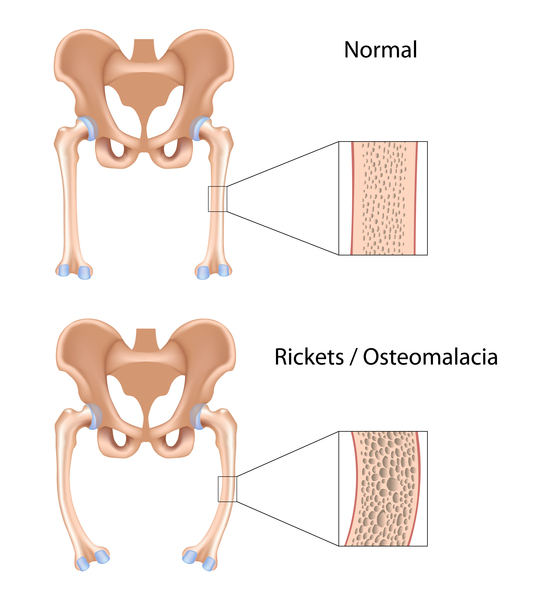Osteomalacia is a defect in mineralization of bone. The defective mineralization is mainly caused by lack in vitamin D. Osteomalacia is derived from Greek: osteo refers to bone, and malacia means softness.
What are the causes of Osteomalacia?
- Insufficient sunlight exposure, especially in dark-skinned subjects
- Insufficient nutritional quantities or faulty metabolism of vitamin D or phosphorus
- Malnutrition during pregnancy
- Malabsorption syndrome
- Chronic renal failure
What are the clinical features of Osteomalacia?
- It is a disease with a slow onset of aches and pains in the lumbar (lower back) region and thighs, spreading later to the arms and ribs.
- Proximal muscles are weak, and there is difficulty in climbing up stairs and getting up from a squatting position.
- Pathologic fractures due to weight bearing may develop.
What are the necessary investigations?
a. Fasting blood for:
- Total calcium
- Albumin
- Phosphorous
- Alkaline phosphotase
- 25(OH) Vitamin D level
- Parathyroid hormone level
b. X-ray pelvis with femur

What is the treatment?
Treatment is Vitamin D, can be given orally or by injection. Now a days we donot use injection much as oral preparation are good and work quickly (Injection available as an oil based injection, hence better to be taken in back). Oral calcium supplementation is to be continued.
A word of caution – serum calcium levels are to be monitored.
Also see,